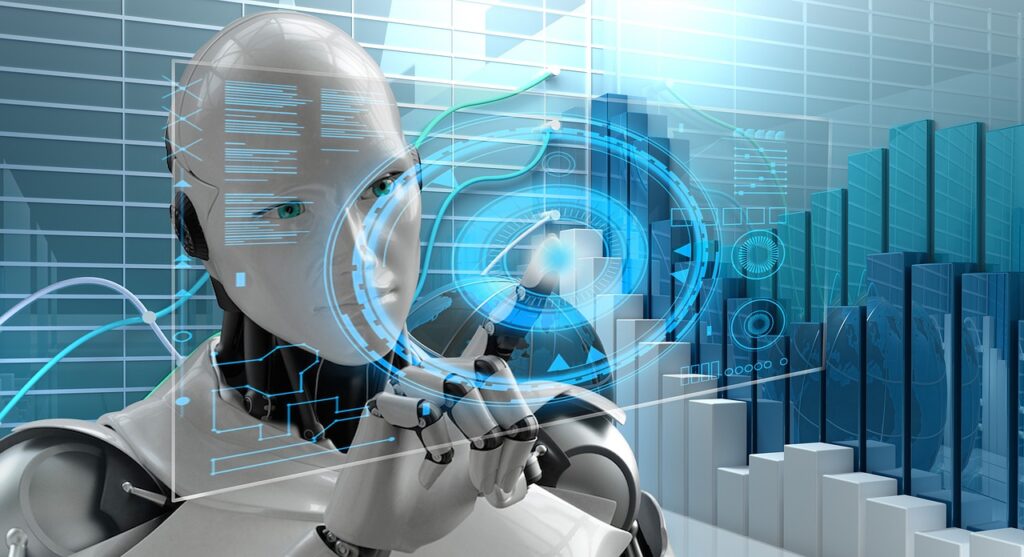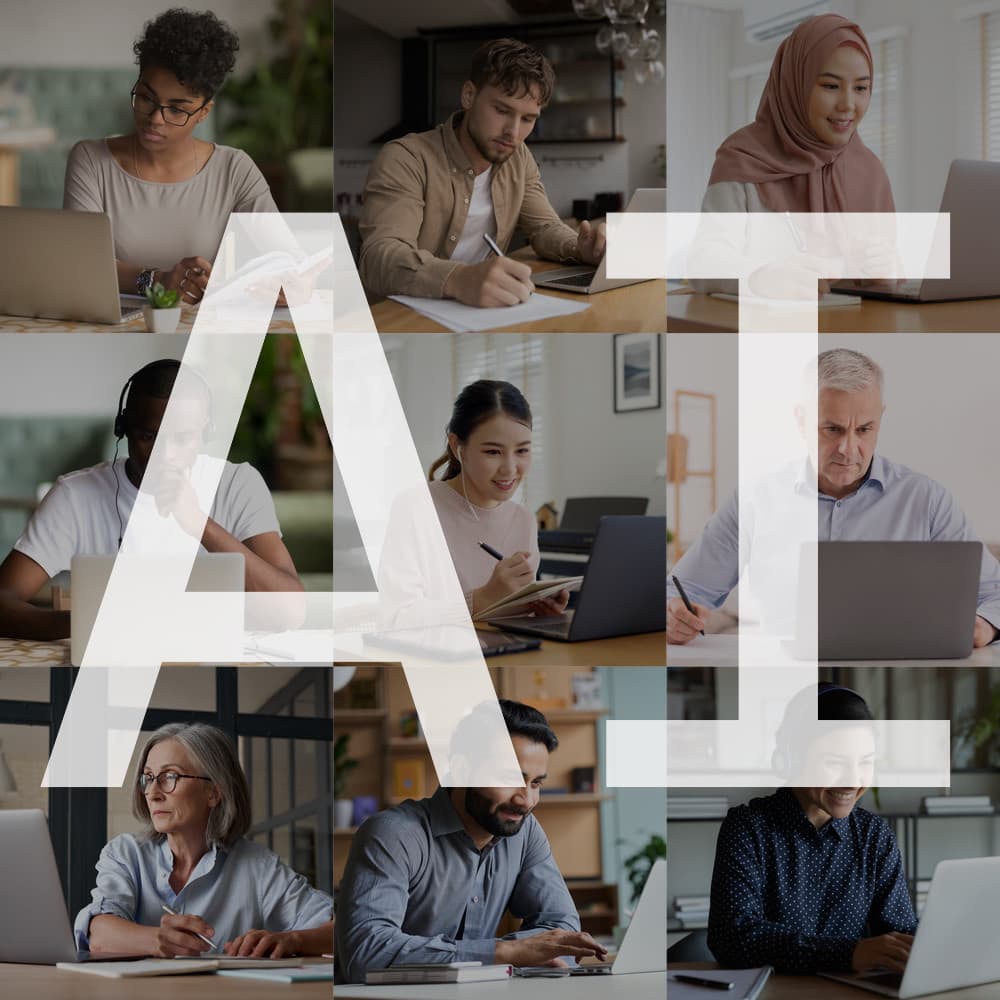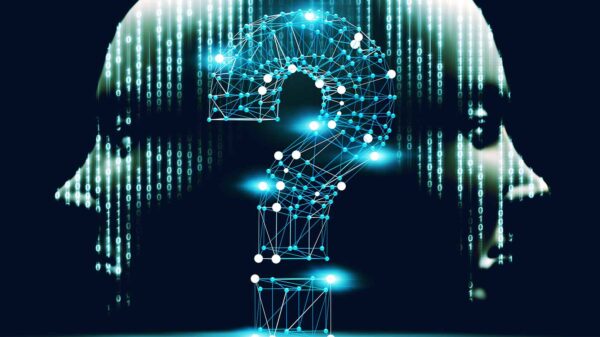Chapter 1: Understanding Artificial Intelligence
1.1 What is Artificial Intelligence?
Artificial Intelligence (AI) is the branch of computer science that deals with the creation of systems and machines capable of performing tasks that typically require human intelligence. These tasks include understanding natural language, recognizing patterns, solving problems, and making decisions.
AI systems rely on various technologies, including machine learning, deep learning, and neural networks. They can process vast amounts of data, learn from it, and adapt their behavior based on experience.
AI is not a single technology but rather a broad field with numerous subfields and applications. It has the potential to revolutionize industries, improve healthcare, enhance transportation systems, and much more.
1.2 A Brief History of AI
The history of AI can be traced back to ancient myths and legends featuring intelligent automatons and mechanical beings. However, the modern era of AI began in the mid-20th century.
- 1950s: The term “artificial intelligence” was coined, and the field of AI research was officially established. Early AI pioneers like Alan Turing and John McCarthy laid the groundwork for future developments.
- 1960s-1970s: AI research experienced significant growth, leading to the creation of expert systems. These systems used rules and knowledge to solve specific problems and were applied in various domains, including medicine and finance.
- 1980s: Despite initial optimism, AI research faced challenges, resulting in what is known as the “AI winter.” Funding and interest in AI dwindled due to unrealistic expectations and limitations in technology.
- 1990s-Present: AI experienced a resurgence with the advent of machine learning techniques, particularly neural networks. Breakthroughs in deep learning, fueled by increased computing power and the availability of large datasets, have propelled AI into mainstream applications.
1.3 Types of AI: Narrow vs. General AI
AI can be categorized into two main types: Narrow AI (or Weak AI) and General AI (or Strong AI).
- Narrow AI: Narrow AI systems are designed for specific tasks or domains. They excel at performing well-defined tasks but lack general intelligence. Examples of narrow AI include voice assistants like Siri and Alexa, recommendation systems used by Netflix, and autonomous vehicles.
- General AI: General AI refers to systems with human-like intelligence and the ability to perform a wide range of tasks, learn from experiences, and adapt to new situations. Achieving General AI is a long-term goal of AI research and remains an area of active exploration.
General AI, if achieved, would have the ability to understand and learn any intellectual task that a human can do. This includes reasoning, problem-solving, understanding natural language, and more.
Chapter 2: Machine Learning: The Backbone of AI

2.1 Introduction to Machine Learning
Machine Learning (ML) is a subset of AI that focuses on developing algorithms and models that allow computers to learn from data and make predictions or decisions without being explicitly programmed. It is the driving force behind many AI applications and is responsible for significant advancements in various domains.
At its core, ML involves the following key components:
- Data: ML algorithms require large amounts of data to learn patterns and make accurate predictions.
- Algorithms: These are mathematical models and techniques that enable machines to learn from data.
- Training: ML models are trained on historical data, during which they adjust their internal parameters to improve performance.
- Inference: Once trained, ML models can make predictions or decisions when presented with new, unseen data.
Machine learning can be further categorized into several subfields, each with its own set of techniques and applications. These subfields include supervised learning, unsupervised learning, reinforcement learning, and deep learning.
2.2 Supervised Learning
Supervised learning is one of the most common and foundational forms of ML. In supervised learning, the algorithm is trained on a labeled dataset, where each example in the dataset is paired with the correct output. The goal is for the algorithm to learn a mapping from inputs to outputs so that it can make accurate predictions on new, unseen data.
Common applications of supervised learning include:
- Image classification: Identifying objects or patterns within images.
- Speech recognition: Converting spoken language into text.
- Natural language processing (NLP): Analyzing and generating human language.
- Recommendation systems: Suggesting products, movies, or content based on user preferences.
- Medical diagnosis: Detecting diseases or medical conditions based on patient data.
Supervised learning algorithms include linear regression, decision trees, support vector machines, and neural networks.
2.3 Unsupervised Learning
Unsupervised learning, as the name suggests, involves training ML models on unlabeled data. In this case, the algorithm’s goal is to uncover patterns, structures, or relationships within the data without explicit guidance.
Common applications of unsupervised learning include:
- Clustering: Grouping similar data points together. For example, clustering news articles into topics or segmenting customers based on behavior.
- Dimensionality reduction: Reducing the number of features or variables in a dataset while preserving important information. This is useful for data visualization and simplifying complex problems.
- Anomaly detection: Identifying rare and unusual patterns or outliers in data, which can be indicative of fraud or errors.
- Generative modeling: Creating new data samples that resemble the training data. This is used in tasks like generating realistic images or text.
Unsupervised learning algorithms include k-means clustering, principal component analysis (PCA), and autoencoders.
2.4 Reinforcement Learning
Reinforcement learning (RL) is a type of machine learning where an agent interacts with an environment and learns to make sequences of decisions (actions) to maximize a cumulative reward signal. RL is often used in scenarios where the consequences of actions play out over time.
Key components of reinforcement learning include:
- Agent: The learning entity that interacts with the environment and takes actions.
- Environment: The external system with which the agent interacts. The environment responds to the agent’s actions and provides feedback in the form of rewards.
- Policy: A strategy or set of rules that the agent follows to decide which actions to take in different states of the environment.
- Reward function: A mechanism that provides feedback to the agent by assigning a numerical reward or penalty based on the actions taken and the state of the environment.
- Value function: An estimate of the expected cumulative reward that an agent can achieve from a given state or state-action pair.
Reinforcement learning has found applications in robotics, autonomous vehicles, game playing (e.g., AlphaGo), and recommendation systems.
2.5 Deep Learning
Deep learning is a subset of machine learning that focuses on neural networks with multiple layers, also known as deep neural networks. These networks are inspired by the structure and function of the human brain and have the capacity to learn intricate patterns from large datasets.
Deep learning has gained widespread attention and popularity due to its remarkable performance in various tasks, including:
- Image classification: Identifying objects and features within images with high accuracy.
- Natural language processing: Achieving state-of-the-art results in tasks such as machine translation, sentiment analysis, and language generation.
- Speech recognition: Enabling accurate and robust voice assistants and transcription systems.
- Autonomous driving: Powering perception and decision-making systems for self-driving cars.
- Healthcare: Aiding in medical image analysis, disease diagnosis, and drug discovery.
Deep learning architectures include convolutional neural networks (CNNs) for image-related tasks, recurrent neural networks (RNNs) for sequential data, and transformer-based models for natural language processing.
The success of deep learning can be attributed to factors like increased computing power, the availability of large labeled datasets, and advancements in training algorithms (e.g., backpropagation and stochastic gradient descent).
Deep learning has also led to breakthroughs in areas like generative adversarial networks (GANs) for image generation, reinforcement learning for game playing (e.g., AlphaZero), and transfer learning, where pre-trained models can be fine-tuned for specific tasks with limited data.
Chapter 3: AI in Practice

3.1 Natural Language Processing (NLP)
Natural Language Processing (NLP) is a subfield of AI that focuses on enabling computers to understand, interpret, and generate human language. NLP applications range from simple chatbots to advanced language models that can write coherent articles and translate languages.
Key components of NLP include:
- Tokenization: Breaking down text into smaller units, such as words or subwords, for analysis.
- Named Entity Recognition (NER): Identifying and categorizing entities within text, such as names of people, places, and organizations.
- Part-of-Speech Tagging: Assigning grammatical categories (e.g., noun, verb, adjective) to words in a sentence.
- Sentiment Analysis: Determining the emotional tone of a piece of text, often used in social media monitoring and customer feedback analysis.
- Machine Translation: Automatically translating text from one language to another, as seen in services like Google Translate.
- Question Answering: Providing answers to questions posed in natural language.
NLP has seen significant advancements in recent years, primarily due to the development of transformer-based models like GPT (Generative Pre-trained Transformer) and BERT (Bidirectional Encoder Representations from Transformers). These models have achieved state-of-the-art results in a wide range of NLP tasks and have sparked interest in applications such as content generation, language understanding, and even creative writing.
3.2 Computer Vision
Computer Vision is a field of AI that focuses on enabling machines to interpret and understand visual information from the world, such as images and videos. This field has found applications in numerous domains, from medical image analysis to self-driving cars.
Key components of computer vision include:
- Image Classification: Assigning labels or categories to images based on their content. For example, identifying whether an image contains a cat or a dog.
- Object Detection: Identifying and locating objects within an image or video stream. This is used in autonomous vehicles to detect pedestrians and obstacles.
- Image Segmentation: Dividing an image into meaningful segments or regions, often used in medical imaging to identify structures within the human body.
- Face Recognition: Identifying and verifying individuals based on facial features. This has applications in security systems and access control.
- Scene Understanding: Analyzing the context and content of a scene, such as recognizing indoor or outdoor environments.
- Image Generation: Creating realistic images using generative models like GANs.
Computer vision systems typically rely on deep learning models, especially convolutional neural networks (CNNs), which excel at tasks involving visual data. CNNs have achieved remarkable accuracy in tasks like image classification and object detection and have enabled advancements in facial recognition and autonomous navigation.
3.3 Robotics
AI and robotics are closely intertwined fields, with AI technologies playing a critical role in enabling robots to perceive, plan, and act in complex environments. Robotics has applications in manufacturing, healthcare, agriculture, space exploration, and more.
Key components of AI in robotics include:
- Perception: Using sensors, cameras, and other data sources to perceive the robot’s surroundings. This includes tasks like object detection and localization.
- Mapping and Localization: Creating maps of the environment and determining the robot’s position within that environment.
- Path Planning: Generating optimal paths for robots to navigate through obstacles and reach their goals.
- Manipulation: Enabling robots to interact with objects, whether for assembly in manufacturing or assisting with everyday tasks in homes and healthcare.
- Autonomy: Developing robots that can make decisions and adapt to changing situations without human intervention.
One of the most prominent examples of AI in robotics is the development of self-driving cars, where AI algorithms process sensor data to make real-time decisions about vehicle control and navigation.
3.4 Healthcare and Medicine
AI is making significant inroads into the field of healthcare and medicine, offering solutions that improve diagnosis, treatment, and patient care.
Applications of AI in healthcare include:
- Medical Image Analysis: AI algorithms can analyze medical images such as X-rays, MRI scans, and CT scans to detect anomalies and assist in diagnosis.
- Drug Discovery: AI is used to accelerate the drug discovery process by predicting the effectiveness of drug candidates and identifying potential compounds for further study.
- Personalized Medicine: AI can analyze patient data to tailor treatment plans based on an individual’s genetic makeup and medical history.
- Health Monitoring: Wearable devices and AI-powered apps can continuously monitor vital signs and detect early signs of health issues.
- Disease Prediction: Machine learning models can predict disease outbreaks and epidemics by analyzing data from various sources.
AI is also playing a crucial role in the fight against COVID-19. Researchers have used AI to analyze medical data, develop diagnostic tools, and predict the spread of the virus.
3.5 Finance
The financial industry has embraced AI to improve decision-making, reduce risk, and enhance customer experiences. AI-powered algorithms can analyze vast amounts of financial data and make predictions about market trends, investment opportunities, and fraud detection.
Key applications of AI in finance include:
- Algorithmic Trading: AI algorithms can execute high-frequency trades and make investment decisions based on market conditions and historical data.
- Credit Scoring: Machine learning models can assess an individual’s creditworthiness by analyzing their financial history and other factors.
- Fraud Detection: AI can identify unusual patterns and behaviors that may indicate fraudulent activity, helping to protect financial institutions and consumers.
- Customer Service: Chatbots and virtual assistants powered by NLP can provide customer support and answer inquiries.
- Risk Management: AI models can assess and mitigate risks in lending, insurance, and investment portfolios.
- Quantitative Analysis: AI techniques are used to analyze and model financial data, including predicting stock prices and optimizing investment strategies.
The use of AI in finance has the potential to increase efficiency and reduce costs, but it also raises ethical and regulatory considerations, particularly concerning algorithmic bias and transparency.
3.6 Transportation
AI is revolutionizing the transportation industry, particularly with the development of autonomous vehicles. Self-driving cars and trucks are equipped with AI-powered systems that enable them to navigate and operate safely on roads.
Key aspects of AI in transportation include:
- Autonomous Vehicles: Self-driving cars and trucks use sensors, cameras, and AI algorithms to perceive their environment, make decisions, and control their movements.
- Traffic Management: AI systems can optimize traffic flow and reduce congestion by coordinating signals and adjusting traffic patterns in real-time.
- Ride-Sharing and Navigation: AI-powered apps and platforms provide ride-sharing services and real-time navigation with traffic updates.
- Delivery Drones: AI-controlled drones are used for package delivery in some areas, enabling quick and efficient deliveries.
- Public Transportation: AI systems can improve the scheduling and efficiency of public transportation systems, reducing wait times and energy consumption.
AI in transportation has the potential to enhance safety, reduce accidents, and provide mobility solutions for people with disabilities or limited access to transportation.
3.7 Entertainment and Gaming
The entertainment industry has embraced AI for content generation, personalization, and game development.
Applications of AI in entertainment and gaming include:
- Content Recommendation: Streaming platforms like Netflix and Spotify use AI algorithms to recommend movies, music, and TV shows based on user preferences and viewing history.
- Game Development: AI is used to create intelligent non-player characters (NPCs), generate procedural content, and enhance realism in virtual environments.
- Voice and Speech Synthesis: AI-powered voice assistants and speech synthesis technologies provide immersive experiences in games and interactive media.
- Virtual Reality (VR) and Augmented Reality (AR): AI enhances VR and AR experiences by tracking user movements, rendering realistic environments, and enabling natural interactions.
- Creative Writing: AI can generate text, music, and art, opening new possibilities for creative expression.
AI-driven chatbots are also used in customer support for gaming platforms and entertainment services, providing instant assistance to users.
Chapter 4: Challenges and Ethical Considerations

4.1 Bias and Fairness in AI
One of the most significant challenges in AI is the presence of bias in algorithms. Bias can result from biased training data or biased design decisions in AI systems. Biased AI can perpetuate discrimination and inequality, especially in areas like hiring, lending, and criminal justice.
Addressing bias and ensuring fairness in AI is a critical ethical concern. Steps to mitigate bias include:
- Diverse Training Data: Ensuring that training data represents diverse demographics to reduce bias in algorithmic decisions.
- Transparency: Making AI systems more transparent and explainable so that their decisions can be understood and challenged.
- Fairness Audits: Regularly auditing AI systems for bias and fairness and taking corrective actions.
- Ethical Guidelines: Developing and adhering to ethical guidelines for AI development and deployment.
4.2 Privacy Concerns
AI often involves the processing of personal data, which raises significant privacy concerns. Ensuring that data is handled securely and that individuals’ privacy rights are respected is essential.
Privacy safeguards in AI include:
- Data Encryption: Encrypting data to protect it from unauthorized access during transmission and storage.
- Data Anonymization: Removing or obfuscating personally identifiable information (PII) from datasets.
- Consent and Data Governance: Obtaining informed consent from individuals before collecting and using their data and establishing clear data governance policies.
- Data Minimization: Collecting and retaining only the minimum data necessary for a specific purpose.
- Privacy-Preserving AI: Developing AI techniques that can perform tasks without exposing sensitive data, such as federated learning.
- Regulatory Compliance: Complying with data protection regulations such as GDPR (General Data Protection Regulation) and CCPA (California Consumer Privacy Act).
4.3 Job Displacement and the Future of Work
The automation of tasks and jobs by AI and robotics raises concerns about job displacement and its impact on the workforce. While AI can create new job opportunities, it also requires upskilling and adaptation from workers.
Efforts to address these concerns include:
- Reskilling and Training: Providing opportunities for workers to acquire new skills and transition to roles that complement AI technology.
- Labor Market Policies: Implementing policies that support workers during job transitions, such as unemployment benefits and job placement programs.
- Collaborative AI: Focusing on AI systems that work alongside humans, augmenting their capabilities rather than replacing them entirely.
- Ethical Considerations: Considering the societal implications of job displacement and working toward inclusive solutions.
4.4 AI and Creativity
The role of AI in creative fields, such as art and music, raises questions about the nature of creativity and authorship. AI-generated content challenges traditional definitions of artistic expression and originality.
Ethical considerations in AI and creativity include:
- Attribution: Clearly attributing AI-generated content to its creators, whether human or machine.
- Copyright and Ownership: Defining ownership and copyright for AI-generated works and establishing legal frameworks to address these issues.
- Cultural and Artistic Impact: Exploring the cultural and artistic implications of AI-generated content and its impact on human creativity.
4.5 AI in Warfare
The development and deployment of AI in military applications, including autonomous weapons, raise significant ethical and international security concerns.
Key considerations include:
- Lethal Autonomous Weapons: The ethical and legal implications of AI systems that can make decisions to use lethal force without human intervention.
- International Agreements: Efforts to establish international agreements and regulations on the use of AI in warfare.
- Accountability and Responsibility: Determining accountability when AI systems are involved in military actions and ensuring adherence to international laws and norms.
Chapter 5: The Future of AI

5.1 AI and Singularity
The concept of technological singularity, where AI surpasses human intelligence, is a topic of debate and speculation. While some envision a future where AI achieves superhuman capabilities, others remain cautious about the challenges and risks associated with such scenarios.
Key discussions around AI and singularity include:
- Ethical Safeguards: Developing ethical safeguards and control mechanisms to ensure the responsible development and deployment of AI.
- Ethical AI Research: Promoting research into the ethical dimensions of AI to address issues related to consciousness, agency, and control.
5.2 AI in Education
AI has the potential to transform education by personalizing learning experiences, providing targeted interventions, and improving educational outcomes for students.
Key aspects of AI in education include:
- Personalized Learning: Tailoring educational content and pacing to individual student needs.
- Intelligent Tutoring Systems: AI-powered systems that provide real-time feedback and assistance to students.
- Data-Driven Insights: Using AI to analyze educational data for insights into student performance and instructional improvements.
- Accessibility: Ensuring that AI-enhanced education is accessible to all students, regardless of their background or abilities.
5.3 Quantum Computing and AI
Quantum computing, a nascent field, has the potential to revolutionize AI by significantly speeding up complex calculations. Quantum AI algorithms could have profound implications for areas like drug discovery, materials science, and optimization problems.
Key discussions around quantum computing and AI include:
- Quantum Advantage: Exploring how quantum computing can provide a significant advantage in AI tasks compared to classical computing.
- Hybrid Models: Developing hybrid quantum-classical AI models that leverage the strengths of both quantum and classical computing.
- Security: Addressing the cybersecurity implications of quantum computing, which could potentially break current encryption methods.
5.4 Ethical AI Development
The responsible and ethical development of AI is crucial to address the societal and ethical challenges associated with this technology.
Ethical AI development principles include:
- Fairness: Ensuring that AI systems are fair and do not discriminate against individuals or groups.
- Transparency: Making AI systems transparent and explainable so that their decisions can be understood and audited.
- Accountability: Determining who is responsible when AI systems make erroneous or harmful decisions.
- Privacy: Respecting individuals’ privacy rights and protecting their data.
- Bias Mitigation: Taking proactive measures to identify and mitigate bias in AI systems.
- Human-AI Collaboration: Fostering collaboration between humans and AI systems to ensure responsible and effective decision-making.
5.5 AI Regulation and Policy
Governments and international organizations are actively developing regulations and policies to govern the use of AI and mitigate its risks.
Key areas of AI regulation and policy include:
- Data Protection: Enacting laws and regulations that protect individuals’ data and ensure responsible data use in AI applications.
- Safety Standards: Defining safety standards for AI systems, especially in critical domains like healthcare and autonomous vehicles.
- Ethical Guidelines: Developing ethical guidelines and principles for AI research and deployment.
- International Cooperation: Encouraging international cooperation and agreements to address the global nature of AI challenges.
Chapter 6: Getting Started with AI

6.1 Learning AI: Courses and Resources
If you’re interested in learning AI, there are numerous resources available, ranging from online courses and tutorials to textbooks and research papers. Here are some recommended steps:
- Online Courses: Platforms like Coursera, edX, and Udacity offer AI and machine learning courses from top universities and institutions.
- Books: Explore AI and ML books by authors like Andrew Ng, Ian Goodfellow, and Christopher Bishop.
- Coding Practice: Learn programming languages like Python, and practice AI coding on platforms like Kaggle.
- Online Communities: Join AI forums and communities like Stack Overflow, Reddit’s r/MachineLearning, and AI conferences for discussions and support.
6.2 Building AI Projects
Hands-on experience is crucial in AI learning. Start with simple projects and gradually move to more complex ones. Some project ideas include:
- Image Classification: Create an image classifier using a pre-trained deep learning model.
- Chatbot: Develop a chatbot using NLP techniques and integrate it into a website or messaging platform.
- Predictive Analytics: Use regression or classification models to make predictions, such as stock price forecasting or customer churn prediction.
- Recommendation System: Build a recommendation engine for movies, music, or products.
- Natural Language Generation: Create a text generation model that generates creative stories or poetry.
- Robotics: Experiment with robotics kits and program robots to perform specific tasks.
6.3 AI Career Paths
AI offers diverse career opportunities. Depending on your interests and expertise, you can pursue roles such as:
- Machine Learning Engineer: Specializing in developing and deploying machine learning models.
- Data Scientist: Analyzing and interpreting data to derive insights and make data-driven decisions.
- AI Researcher: Conducting research in AI and contributing to the development of new algorithms and technologies.
- AI Ethicist: Ensuring responsible and ethical AI development and deployment.
- AI Product Manager: Overseeing the development and launch of AI-powered products and solutions.
- AI Consultant: Providing AI expertise and solutions to businesses and organizations.
- AI Educator: Teaching AI and machine learning concepts to others through training and education programs.
In conclusion, the field of Artificial Intelligence is vast and continually evolving. Whether you’re looking to learn AI, apply it to specific domains, or contribute to its ethical and responsible development, there are numerous opportunities to explore and make a meaningful impact in this exciting field.
Related























































You must be logged in to post a comment Login